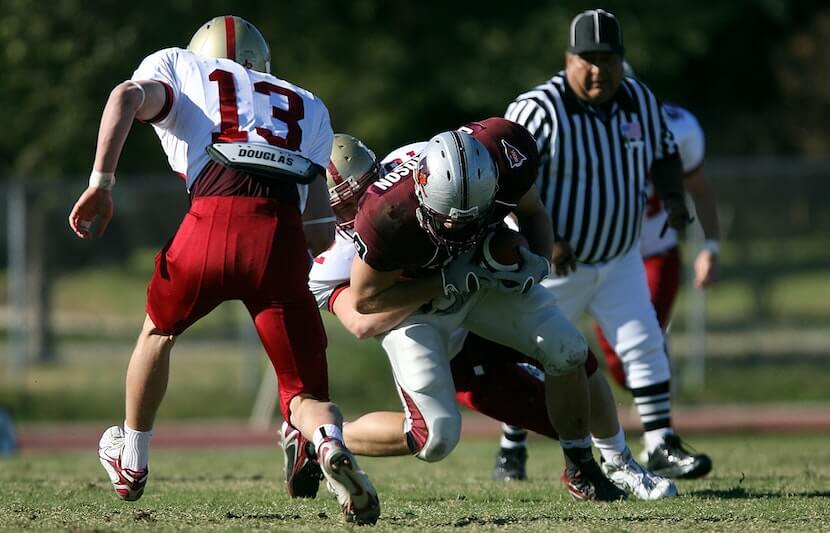Athletes who play contact sports may have a higher chance of developing Lewy body disease (LBD), which can cause Parkinson’s disease and dementia, according to researchers from Boston University School of Medicine (BUSM).
Decades of evidence has made it widely known that head impacts and injuries can lead to the neurodegenerative disease Chronic Traumatic Encephalopathy (CTE).
Until now, scientists had assumed that the tremors, trouble walking and motor dysfunctions experienced by some people with CTE were caused by the disease’s pathology.
However, BUSM’s new research shows that the motor symptoms were instead linked to LBD, a disease commonly associated with problems with movement, sleep, depression, cognition and visual hallucinations.
“These findings are the first to suggest that contact sports play increases the risk of developing Lewy body disease and Parkinson’s disease symptoms,” said Thor Stein, an assistant professor of pathology and laboratory medicine at BUSM and lead author of the study.
“Parkinson’s disease symptoms are mostly a result of Lewy body disease that is present in addition to CTE.”
The study
To conduct the study, the researchers examined 694 brains from the BU Alzheimer’s Disease Center, the Framingham Heart Study and the Veteran’s Affairs-Boston University-Concussion Legacy Foundation.
They determined that an increased risk of having LBD correlated with how long an athlete played a contact sport.
Athletes who played contact sports for more than eight years were found to be six times more likely to have LBD than those who played eight years or less.

Credit: Thor Stein
Those with both LBD and CTE were much more likely to have symptoms of Parkinson’s disease and dementia than than those with only CTE pathology.
“These results will help our understanding of the pathology that underlies the clinical symptoms of CTE,” said Stein.
“They also expand our understanding of the long-term risks involved in contact sports play.”
A paper describing the full study is published in the Journal of Neuropathology and Experimental Neurology
The research team included members from BUSM and the VA Boston Healthcare System.
What’s next?
The researchers have conducted many studies that link brain changes to years of playing contact sports.
This new study, however, is based on previous research from other teams that show a correlation between brain injuries and Parkinson’s disease.
The findings shed light on the long-term medical dangers and consequences of playing contact sports.
But more work is needed.
“Next steps include uncovering the early changes and mechanisms that link repetitive head impacts to CTE and Lewy body disease,” said Stein.
“These may involve inflammatory processes in the brain that may be used for monitoring and making clinical diagnoses during life.
“In addition, more work needs to be done to determine how big the risk is for developing these diseases and to determine the best threshold for contact sports play that takes into account both the benefits and the risks of contact sports.”



